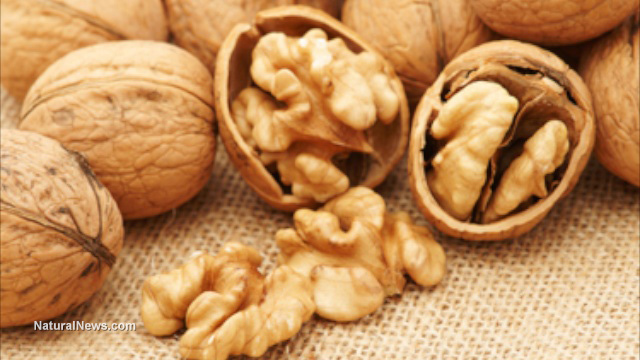
Advertisement
Obesity is a serious health problem in many countries. It is a major risk factor for many diseases, including Type 2 diabetes, hypertension, and cardiovascular disease. Studies have pointed out the role of dietary fat in the development of obesity, and the importance of reducing fat intake from dietary energy in weight loss. A recent study conducted by researchers from Japan compared the effects of alpha-linolenic acid-enriched diacylglycerol (ALA-DAG) and alpha-linolenic acid-enriched triacylglycerol (ALA-TAG) consumption in normal and obese humans. They hypothesized that ALA-DAG consumption can increase dietary fat oxidation. The results of their study were published in the journal Nutrition Research.
Obesity, ALA, DAG, and TAG
The incidence of obesity has dramatically increased in many parts of the world. According to the World Health Organization, more than 1.9 billion adults aged 18 and above were overweight back in 2016. Of these, over 650 million were considered obese. Obesity is defined as abnormal or excessive fat accumulation that results from an energy imbalance. This energy imbalance is due to excessive eating and physical inactivity.
A person’s weight-for-height index, also known as body mass index (BMI), is the basis for their classification into either overweight or obese. A raised BMI is a significant risk factor for many diseases, such as cardiovascular disease, diabetes, musculoskeletal disorders like osteoarthritis, and some cancers like breast, ovarian, prostate, liver, kidney, and colon cancer.
Numerous studies that looked into the bioavailability of lipids suggest that the consumption of different types of fat evokes different rates of fat metabolism. In addition, they point to long-chain fatty acid unsaturation as the reason for the increase in fat usage. As a result, researchers now believe that the quality and the quantity of fat in food may play a role in long-term body weight management and obesity prevention.
Alpha-linolenic acid (ALA) is a plant-based omega-3 fatty acid that can be used to alleviate obesity. It is found in walnuts, butternuts, and hazelnuts, as well as seeds like chia seeds and hemp seeds. ALA, as part of a human diet, enhances fatty acid oxidation and reduces the activation of enzymes necessary for triacylglycerol (TAG) synthesis. ALA can also enhance the specific dynamic effect of food or dietary thermogenesis – the production of heat in response to and following food consumption. Dietary thermogenesis occurs as a result of the metabolic costs of digestion, absorption, metabolism, and storage of nutrients.
Diacylglycerol (DAG) is a natural component that can decrease body weight and enhance energy expenditure in humans. It is structurally different from TAG and has distinct nutritional properties. Studies using rat models have shown that DAG prepared from soybean and rapeseed oil increases fatty acid oxidation in the liver and small intestine. In overweight humans, the combination of ALA and DAG has been found to decrease visceral fat area, TAG concentration in the blood, and BMI.
Triacylglycerol (TAG) is the most abundant lipid in the body and is mostly concentrated in adipose tissue (fat). TAG in human metabolism serves as foodstuff, accounting for a significant portion of human caloric intake, and as storage for metabolic energy. In obesity, TAG synthesis exceeds TAG breakdown (lipolysis), resulting in elevated TAG storage. Ectopic storage of TAG in the muscles and the liver can cause metabolic complications.
ALA-DAG consumption increases fat oxidation decreases visceral fat area in humans
For their study, researchers examined the effects of ALA-DAG and ALA-TAG consumption on fat metabolism and body weight. They conducted the experiment based on the hypothesis that ALA-DAG, which occurs as ALA esterifies to 1,3-diacyl-sn-glycerol (1,3-DAG), has beneficial effects on fat metabolism and body weight compared with TAG. Moreover, ALA-DAG enhances beta-oxidation activity in the small intestine and liver of rodents.
The researchers conducted a randomized, double-blind cross-over trial in 17 normal and moderately obese men and women. They assigned each participant to a 4-week intervention period with 2.5 g/day of ALA-DAG or ALA-TAG consumption, followed by a 4-week washout period between consumption of each diet. They found that ALA-DAG consumption significantly increased dietary fat oxidation in human subjects. The researchers assessed oxidation based on the 13CO2 recovery rate in the breath.
ALA-DAG consumption also significantly decreased the visceral fat area compared with ALA-TAG. The researchers explained that the accumulation of visceral fat area is more closely associated with metabolic risk factors than BMI or subcutaneous fat. Therefore, the assessment of visceral fat area is a good predictor of adverse metabolic consequences.
Based on these results, the researchers concluded that ALA-DAG is better than ALA-TAG as it promotes dietary fat oxidation and decreases visceral fat area. Consumption of ALA-DAG may be useful for preventing obesity.
Sources include:
Advertisements







